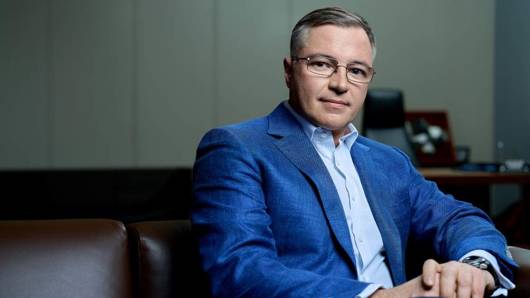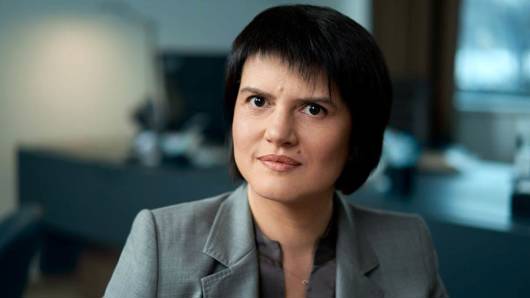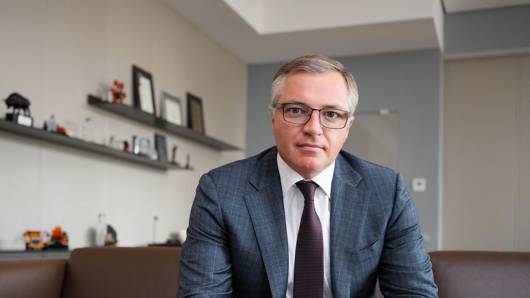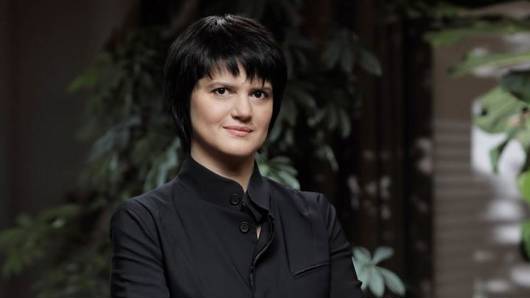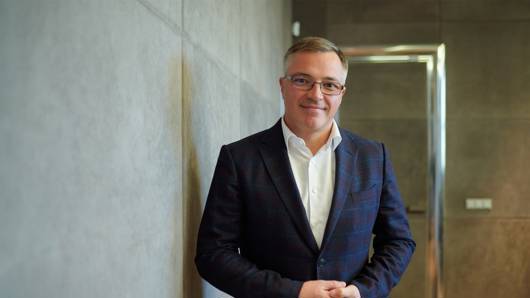In a wide-ranging interview for the FAQ Talks project, Dmytro Nikolayenko, Chief Commercial Officer of Metinvest Group, talked about entering new markets since the start of the war, product quality requirements, the construction of a green steel plant in Italy, russian steel products in Europe and the potential of Ukraine’s mining and metallurgical complex for the country’s rebuilding.
Below is the first part of the conversation.
Market geography and new customers
– How has the geography of Metinvest’s markets changed over three years of wartime: where have we reduced our presence, where have we strengthened our positions and in which directions are we moving?
– Of course, before the full-scale war, Metinvest had broader access to steel product markets. The loss of the Mariupol enterprises – Azovstal and Ilyich Steel – significantly altered our business model. We no longer produce heavy plate, the volumes of hot-rolled, cold-rolled and galvanised coils have decreased substantially, while slabs have completely disappeared as semi-finished products for our European assets. We transformed from being a major seller of slabs into being a major buyer. We have focused on the markets that are most attractive to us in terms of price and logistics.
From the beginning of the war, sea routes were blocked, and we lost the ability to ship products through the Black Sea, especially from Mariupol. We were forced to transport the products to the border, where we encountered congestion and limited access to transshipment facilities and ports in Poland and Romania. This significantly restricted our geography and increased the logistical costs.
That is why we found new customers in nearby regions. Europe opened its market by lifting anti-dumping duties on hot-rolled coils and quotas for Ukraine, which expanded our opportunities there beyond supplying pig iron and billets. In addition, the cessation of supplies of finished products from russian producers to the EU has also created new opportunities for us. We mainly sell pig iron on the US market. As for billets, we supply them to various markets, as prices in Latin America can suddenly become more attractive than those in Türkiye, where the market is saturated with discounted russian products.
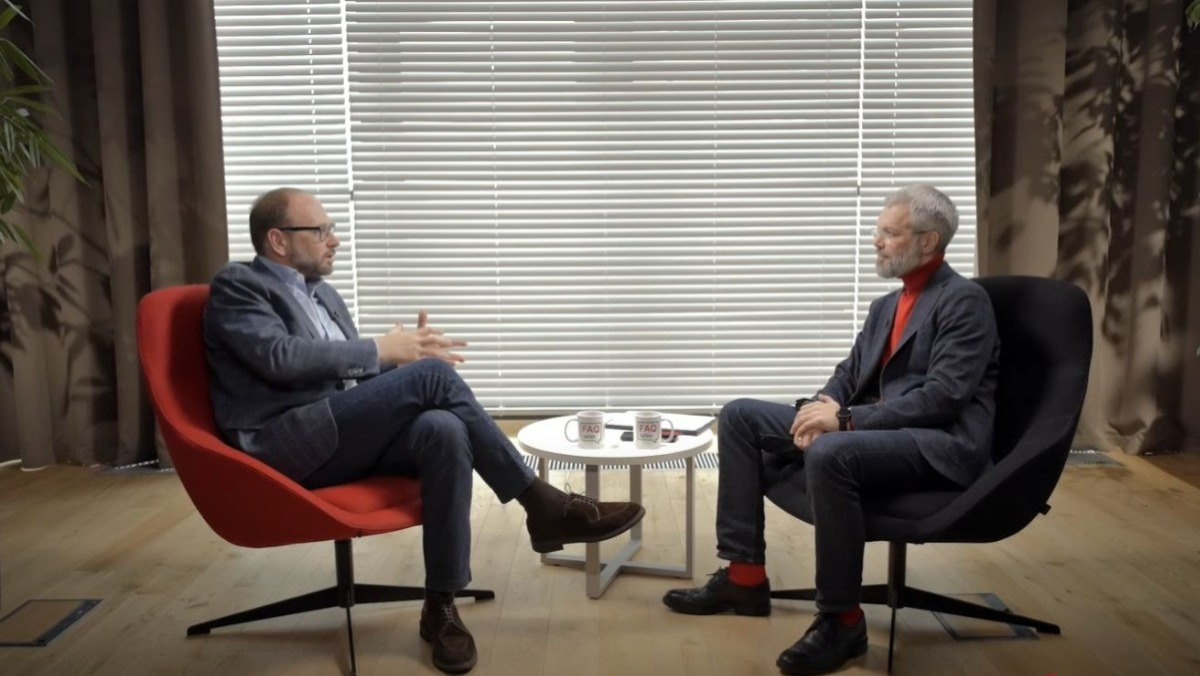
– So, distant markets have become more attractive despite the logistical costs?
– Yes. For example, the US pig iron market is more profitable than the European one due to the absence of russian pig iron, which drives down the overall price level. The US market works exclusively with Ukrainian and Brazilian pig iron. Overall, markets have become more Ukraine-oriented, especially Eastern European and Western European ones, which we can serve through overland transport.
Europe and China remain our key markets for iron ore. Following the resumption of Black Sea navigation, we resumed deliveries to China, gradually reducing freight costs. For instance, the most recent vessel from Odesa to China was chartered at a rate close to the pre-war level. However, the European market remains more attractive. We are focused on supplying raw materials to European customers, particularly in Eastern Europe. In addition, we have secured new customers, including SSAB, with whom we have signed a one-year contract to supply pellets produced by Integrated Iron Ore to their Finnish plant through Polish ports.
Product quality and adaptation to new requirements
– Have product quality requirements changed?
– Quality requirements are gradually evolving as new technologies emerge and production facilities are modernised. In the past, we shipped products from Zaporizhstal and Ilyich Steel, which produced a wide range of high-quality products thanks to new equipment and upgraded rolling mills. However, we are now forced to work with a limited product range for European customers, relying on products from Zaporizhzhia. Meanwhile, the requirements for the steelmakers in Zaporizhzhia have become stricter than they were before the war.
Now they must at least partially compensate for the loss of Ilyich Steel, which presents a serious challenge as the equipment has not changed. Despite this, they are managing, albeit not without difficulties. We have found our customers in Europe – mainly among producers of shaped pipes for structural applications. We have managed to ensure acceptable product quality and carve out a niche in the market.
The new green steel plant in Italy
– To what extent is Metinvest perceived as a European player today? Will the construction of the plant in Italy strengthen this position? After all, the Group’s vertical integration changed after 2022 due to the loss of slabs from Azovstal and the need to purchase semi-finished products externally.
– Our metallurgists at Kamet Steel and Zaporizhstal managed to set up slab production. Still, this is a multi-stage process: steel is smelted at Kamet Steel and then the ingot is rolled at Zaporizhstal, which affects the cost of production. Nevertheless, we use this opportunity, and a portion of the slabs produced in Zaporizhzhia are supplied to the European assets. Meanwhile, coil production remains more profitable for us, so we mainly focus on it.
The construction of the plant in Italy will not transform the positions of Ukrainian producers as European ones, but it will significantly strengthen the presence of Ukraine and Metinvest on the market. Italy is a large importer, purchasing up to 5 million tonnes of steel, including from outside the EU.
The plant will be the most advanced in Europe, built in cooperation with Danieli, which plans to use it as a demonstration site for the industry.
As a technologically advanced company, Danieli is keen to make this plant a cutting-edge facility. It will be a compact, green steel plant with a capacity of 2.7 million tonnes of hot-rolled coils for the Italian market.
Piombino is a favourable location with direct access to the port, enabling the supply of raw materials and the shipment of products by sea. This mode of transport is common in Italy and the proximity to the sea opens export opportunities not only across Europe but also, if necessary, to Türkiye, North Africa and other countries.
Metinvest has high expectations for this plant. It is the Group’s largest project, which will require significant effort, as it is being built from scratch. Although we already have two plants in Italy, the core experience of the team is concentrated in Ukraine. A great deal of work lies ahead: building a team for the plant and adapting to working in a new environment.
– What will be the connection with Ukrainian enterprises? Will this plant become a showroom not only for Danieli but also for us, as an example of the modernisation of Ukrainian assets?
– We will be connected to Ukrainian enterprises through the supply of raw materials, in particular pig iron, and in the future – HBI briquettes from our Kryvyi Rih iron ore plants. This will allow to create synergies. As for technology, the experience gained in Italy will be useful for the modernisation of the Ukrainian plants, including technological solutions and project management.
Russian products on European markets
– How can we explain to Europeans, who support Ukraine, that economic cooperation with russia – including the use of russian products – supports the aggressor and harms Ukraine?
– We have a quota in European markets for the supply of russian semi-finished products, including billets, slabs and commercial pig iron. This quota is gradually being reduced and should disappear. Russians are forced to sell at discounted prices, which creates an imbalance in the market. We have highlighted this issue at various levels, and our government officials – including Deputy Prime Minister Yulia Svyrydenko – support our position. At the same time, we must compete under these conditions. Our European assets are operating, such as Trametal, but due to the weak market conditions we have been forced to halt production at Valsider.
– Where are our products mainly used? Some say that every second skyscraper in London is built with Metinvest steel.
– The UK-based Spartan plant produces heavy plate, which is used especially in the production of steel structures. We also supply products from Trametal, which were previously manufactured using Ukrainian steel but now mainly use Chinese or European steel. However, part of the output is still produced from our steel. In addition, we remain one of the main suppliers to Fincantieri, a large European cruise ship manufacturer.
Since the beginning of the war, Ukrainian steel has become the primary material for defence and fortification structures.
Most of these – including dugouts, command centres and hospitals – are also made from our steel, in particular from Zaporizhstal and Kamet Steel.
The post-war potential of the Ukrainian market
– What is the potential of the Ukrainian market for post-war reconstruction?
– The potential of the Ukrainian market for post-war reconstruction is considerable. As a developed economy, Ukraine could consume between 300 and 600 kilogrammes of steel per capita. This depends on the pace of rebuilding infrastructure and housing. The main demand for steel will come from the construction sector, but industrial production – including cars, white and yellow equipment and machinery – will also be important.
However, attracting investment requires stability and security guarantees. Investors are looking for assurances before they resume production in Ukraine.
– How attractive can steel production be in terms of reconstruction when there is a need to produce quickly without compromising on quality?
– Steel production can be attractive for reconstruction, but Ukraine currently manufactures a limited number of products, including beams, channels and heavy plates. To address this, it will be necessary to resume production at existing enterprises, such as Kamet Steel and Zaporizhstal, or to acquire facilities on the European market. Technologies for producing hollow sections, which are faster and more flexible for different architectural forms, are also promising. However, this will require the development of plants that produce steel structures. It is important to understand that we will be facing competition from foreign producers who are already supplying steel to Ukraine from Türkiye, Europe and China.
– You mentioned that there is a large influx of imported products from Türkiye. But Türkiye purchases products from russia. Is there a possibility that russian steel is delivered to Türkiye, goes through certain stages of processing while there and then ends up here, even today?
– I cannot give a definitive answer as this requires thorough controls. Suppliers claim that this does not happen, and we have to trust them. But it is difficult to say so with absolute certainty. We inspect the products we import and obtain the relevant declarations. I hope that other suppliers also take a responsible approach to this process.
The full video version of the interview is available on Metinvest Group’s official YouTube channel.






